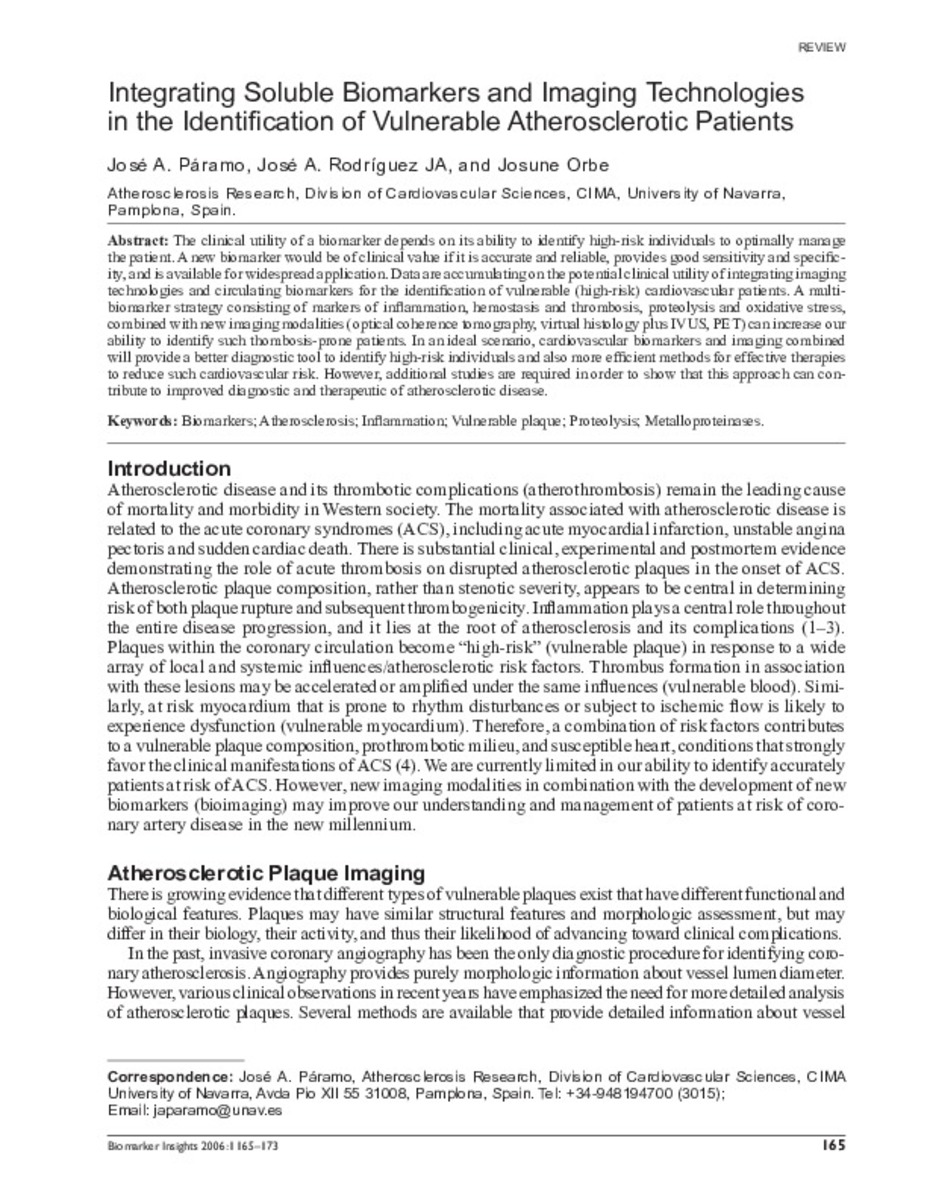Integrating soluble biomarkers and imaging technologies in the identification of vulnerable atherosclerotic patients
Keywords:
Biomarkers
Atherosclerosis
Inflammation
Vulnerable plaque
Proteolysis
Metalloproteinases
Publisher:
Libertas Academica
Citation:
Paramo JA, Rodriguez Ja JA, Orbe J. Integrating soluble biomarkers and imaging technologies in the identification of vulnerable atherosclerotic patients. Biomark Insights 2007 Feb 7;1:165-173.
Statistics and impact
0 citas en

0 citas en

Items in Dadun are protected by copyright, with all rights reserved, unless otherwise indicated.







